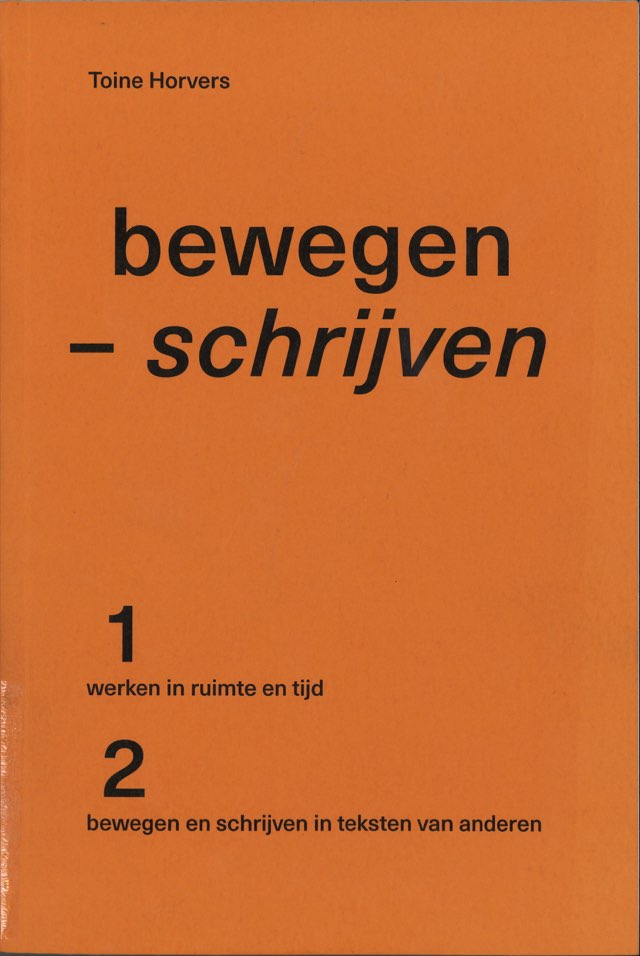Toine Horvers "Rolling"
11.05.1986
de Appel, Prinseneiland 7, Amsterdam
de Appel, Prinseneiland 7, Amsterdam
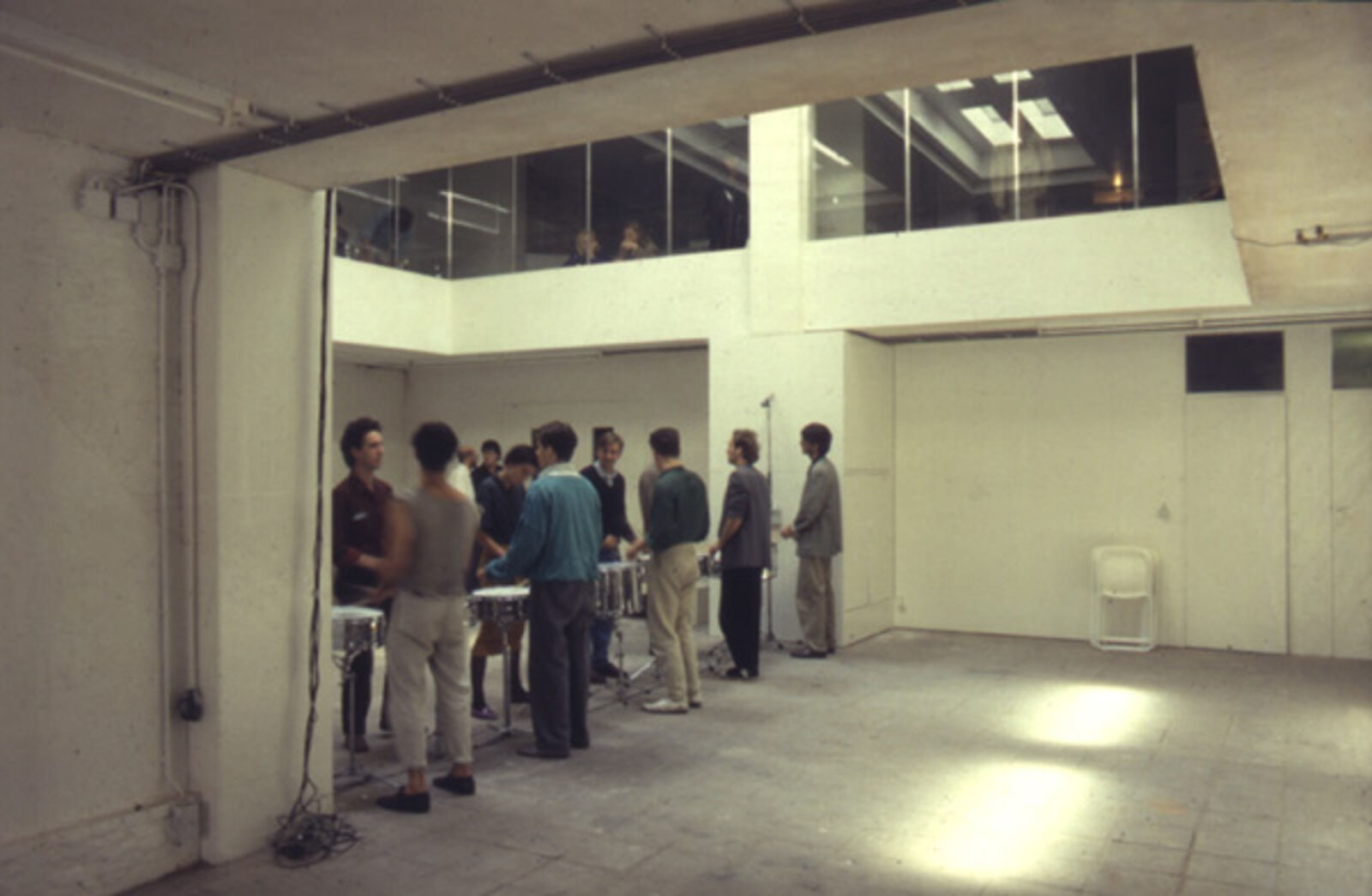
Rolling I
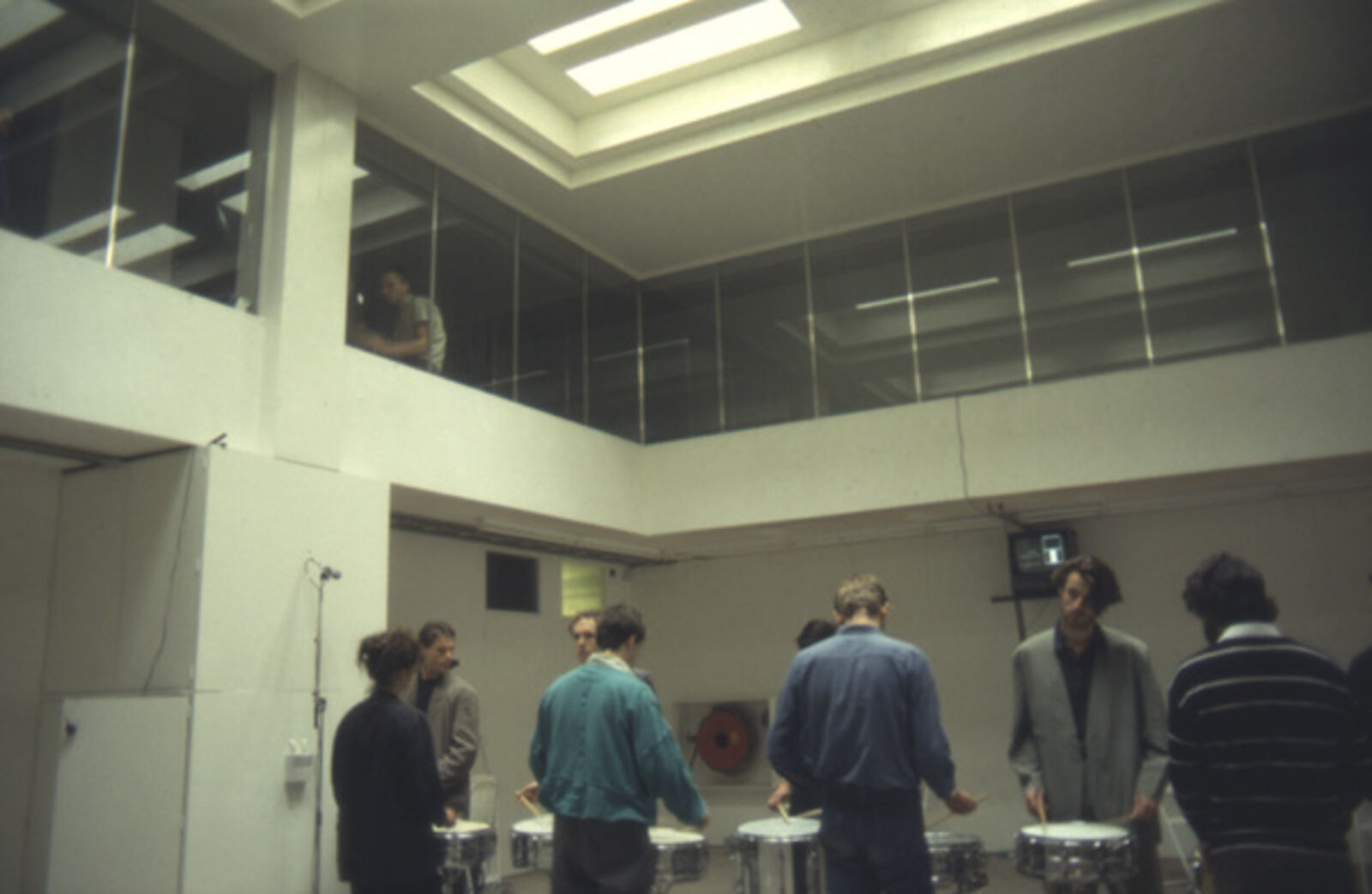
Rolling II
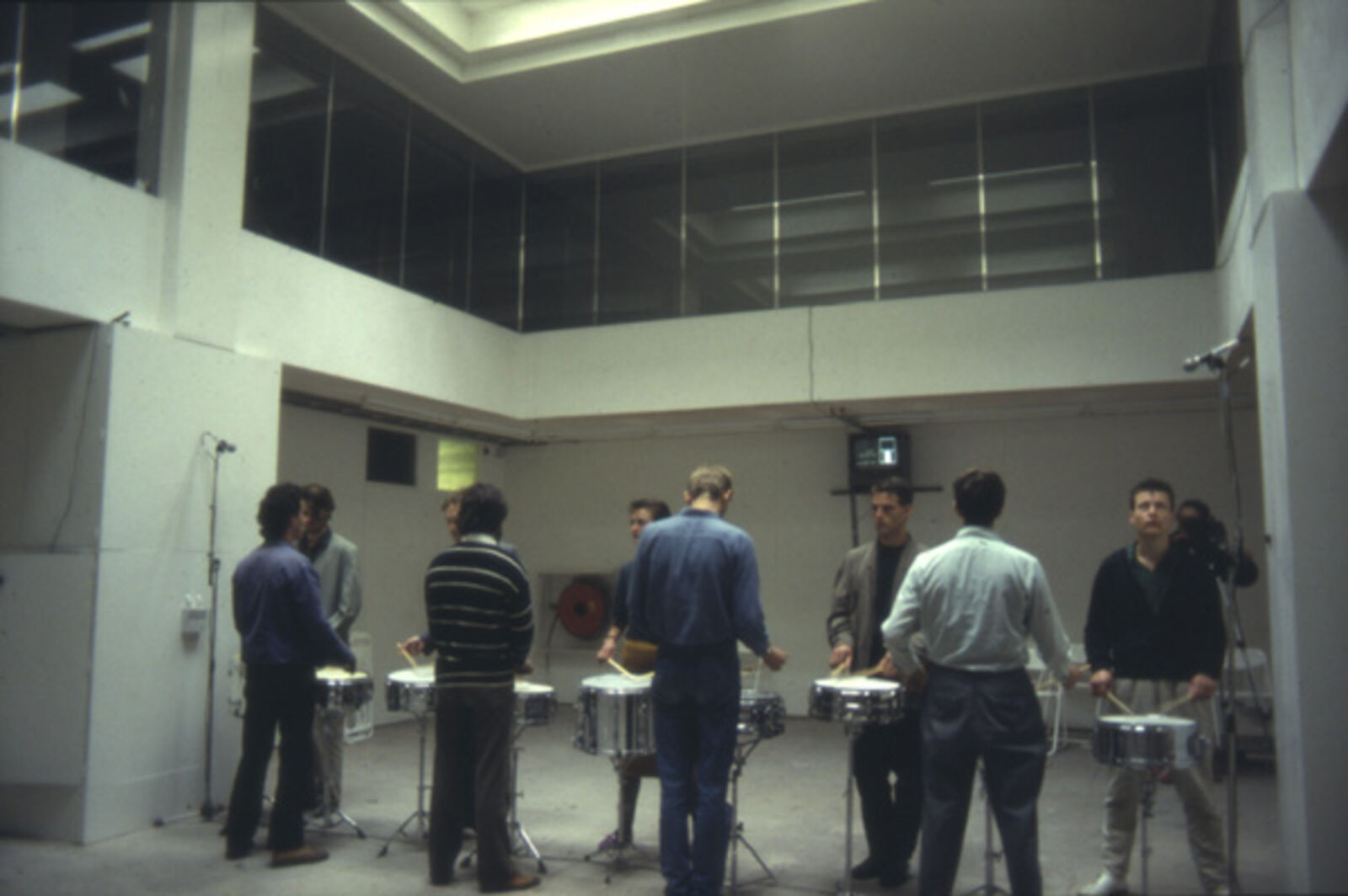
Rolling III
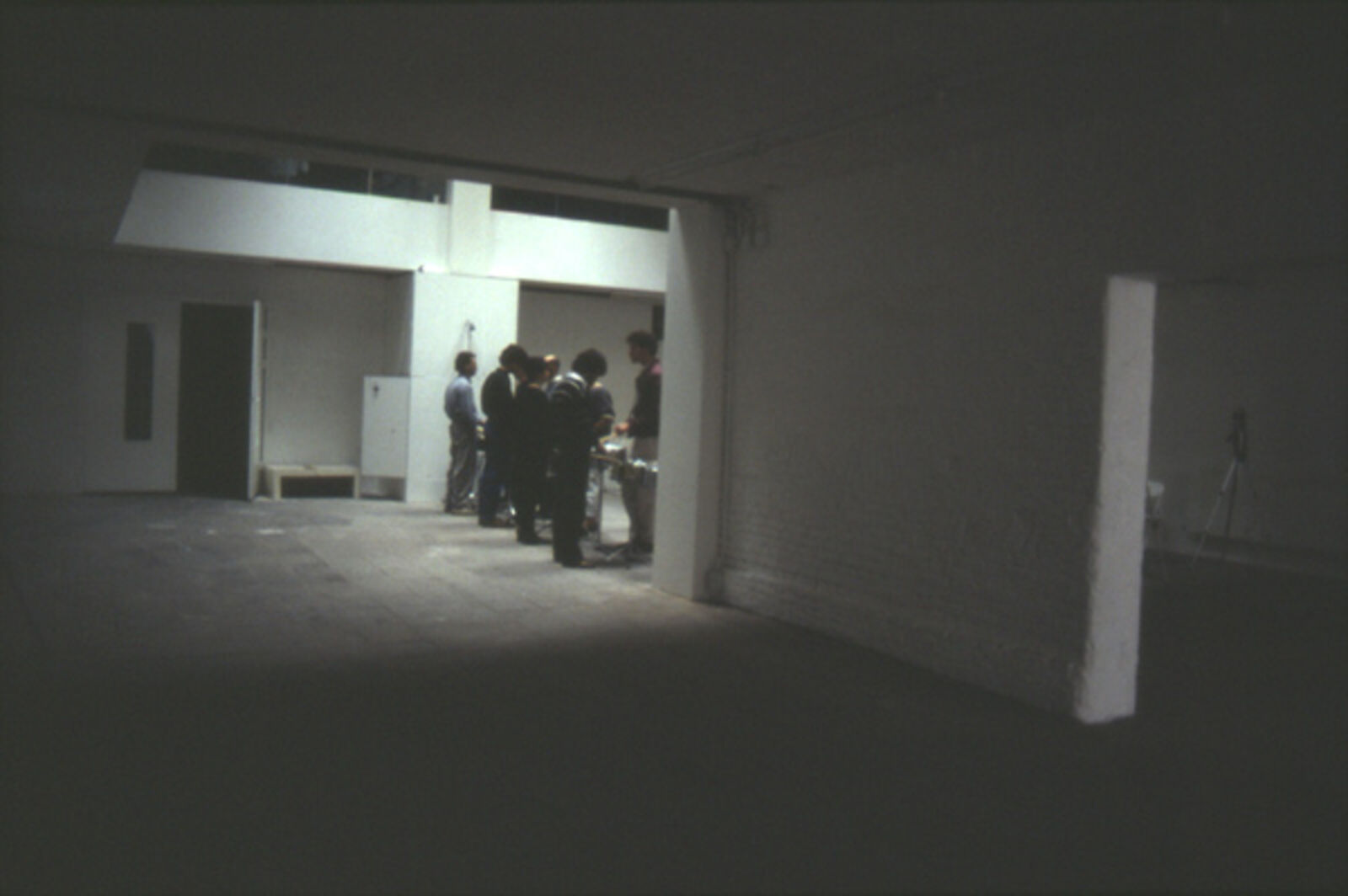
Rolling IV
‘The idea came out of thinking about De Appel's new public space. The big wall which divides the space in two lengthways has been partly pulled down in the middle and also broken through from above to obtain a high open space in the building with a gallery on the first floor. The theatrical point of attention which arises is emphasized still more by a pair of skylight windows above this space in the middle. The plan is, as it were, temporarily to repair the part that has been pulled down by bridging it with energy , by means of movement and sound concentrated into sculpture. On Sunday 11 May, 20 drummers, alternating with each other, will beat an unbroken drum roll from first light until darkness falls. The development of the sound's volume will run parallel with that of the daylight which comes into the space via the skylight window. An essential element for a sculpture like this is the constant tension between the large form in time and the small movements, vibrations, which bring out that large form. In the case of Rolling, the form consists of the coming and going of daylight. The sound arises hesitantly out of nothing, exists for a time in an unstable form and disappears once more into nothingness. In fact, one can hardly speak of a ‘form’, the results remain fragile because of bath the unpredictable quality of the light and the venturing of the drummers who are directed by that light. A later project at the Koopmansbeurs in Amsterdam (September 1986) will have an even more sensitive starting-point. There, the amount of daylight that comes through the glass roof of the Goederenbeurs will define the volume of participants' voices and the number of persons needed to achieve that volume. Therefore, it’s not possible to make a time-table or plan beforehand. Thus, beyond the light’s instability and the venturing human voice, there is also the presence of the performers as an essential element in the sculpture.
Construction and technical details:
10 drums are arranged in a row in the middle of the space, under the skylight window. Microphones have been installed above and there are monitors on stands on both sides of the space so that they can easily be seen by the performers. The daylight is constantly measured by light-sensitive cells installed near the skylight window. The light data and the drum volume, which is brought up to a parallel level, is demonstrated visually on a simple graduated scale on the monitors. Thus, the performing drummers constantly have the possibility to check their collective sound.’
(Toine Horvers, ‘The day is ours’, Newsletter De Appel, 1 (1986) 2.)




